Accepted Scientific Name: Stenocactus ochoterenanus Tiegel
Möller's deutsche gärtner-zeitung 1933, xlviii. 397. as 'ochoterenae' Möller
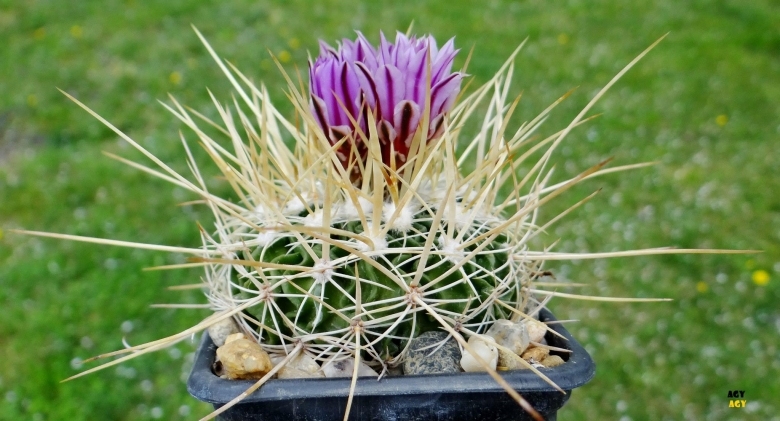
Stenocactus rosasianus Photo by: Agócs György
forma MG 309.5 (Mesa Garden seed catalog)
Origin and Habitat: Homeland these pretty plants are mainly Mexican state of Coahuila, Nuevo Leon, Tamaulipas, Queretaro, San Luis Potosi, Hidalgo and Zacatecas. The relatively large area of occurrence, along with a strong tendency to variability caused significant problems with the generic classification of individual plants of this species, and it is thus not possible to define either the spatial or systematic limits of the taxon (same as Stenocactus ochoterenanusSN|21700]]SN|21700]]?). There is much variation within the current taxon, some of which may correspond to other species.
Synonyms:
See all synonyms of Stenocactus ochoterenanus
back
Accepted name in llifle Database:Stenocactus ochoterenanus TiegelMöller's deutsche gärtner-zeitung 1933, xlviii. 397. as 'ochoterenae'Synonymy: 26
back
Description: Echinofossulocactus rosasianusSN|21722]]SN|21722]] (Stenocactus) is a local or morphological form of the widespread and variable Stenocactus ochoterenanusSN|21700]]SN|21700]]. It has a dark green body with rather thin and undulate ribs, broader at the areoles. The body is covered by numerous, acicular radial spines. The 4 central spines are usually more or less terete and the plant body is generally obscured by the spination. The name Echinofossulocactus rosasianusSN|21722]]SN|21722]] is an invalid name (nom. nud.) and is not accepted by many botanists that treat it as synonym, but it still has a value for a collector because they identify plants with particular characters.
Stem: Solitary , globose, vivid green with a flat tops up to 8 cm tall, 10 cm in diameter.
Flowers: Pale to bright pink, 2.5 cm long.
Fruit: Greenish with whitish scales.
More...Subspecies, varieties, forms and cultivars of plants belonging to the Stenocactus ochoterenanus group
 Stenocactus densispinus (Tiegel ex Pechanek): has numerous white radial spines (to 22 or more), thin sometimes wavy. Central spines: 4, the superior one up to 6.5 cm long flattened dark-brown that age to tan. Distribution: Mexico, Queretaro, Guanajuato (also reported in Hidalgo Aguascalientes and San Luís Potosí)
Stenocactus densispinus (Tiegel ex Pechanek): has numerous white radial spines (to 22 or more), thin sometimes wavy. Central spines: 4, the superior one up to 6.5 cm long flattened dark-brown that age to tan. Distribution: Mexico, Queretaro, Guanajuato (also reported in Hidalgo Aguascalientes and San Luís Potosí) Stenocactus ochoterenanus Tiegel: has acicular, white radial spines. The 4 central spines are usually more or less terete. It is extremely variable with one form intergrading into another. Distribution: Queretaro and Guanajuato (also in Hidalgo, Jalisco, Aguascalientes, Zacatecas and San Luís Potosí)
Stenocactus ochoterenanus Tiegel: has acicular, white radial spines. The 4 central spines are usually more or less terete. It is extremely variable with one form intergrading into another. Distribution: Queretaro and Guanajuato (also in Hidalgo, Jalisco, Aguascalientes, Zacatecas and San Luís Potosí) Stenocactus rosasianus (H.C.Whitmore ex Pechanek): this taxon lacks a description (n.n.) and is not well defined. Plants in cultivation are very variable.
Stenocactus rosasianus (H.C.Whitmore ex Pechanek): this taxon lacks a description (n.n.) and is not well defined. Plants in cultivation are very variable.
Notes: Echinofossulocactus rosasianus nowadays is not considered a distinct species or variety but only one of the variable phenotypes of the clinal species Echinofossulocactus ochoterenanus (now Stenocactus).
Bibliography: Major references and further lectures
1) Gómez-Hinostrosa, C., Sánchez , E., Guadalupe Martínez, J. & Bárcenas Luna, R. 2013. Stenocactus ochoterenanus. The IUCN Red List of Threatened Species. Version 2015.1. <www.iucnredlist.org>. Downloaded on 04 June 2015.
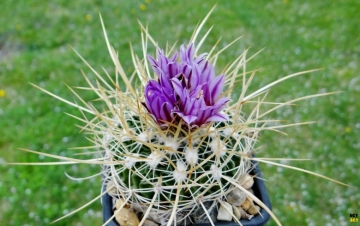 forma MG 309.5 (Mesa Garden seed catalog) Photo by: Agócs György
forma MG 309.5 (Mesa Garden seed catalog) Photo by: Agócs György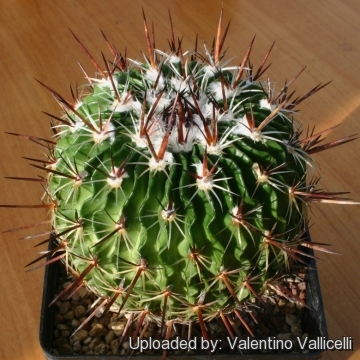 Stenocactus rosasianus Photo by: Valentino Vallicelli
Stenocactus rosasianus Photo by: Valentino Vallicelli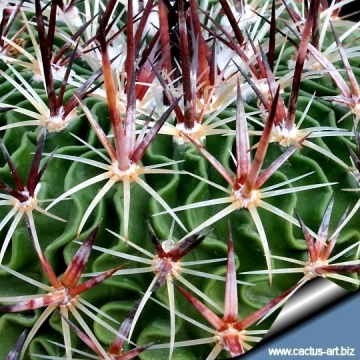 Stenocactus rosasianus Photo by: Cactus Art
Stenocactus rosasianus Photo by: Cactus Art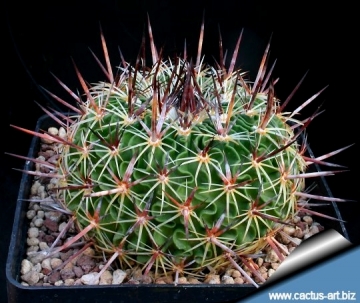 Stenocactus rosasianus Photo by: Cactus Art
Stenocactus rosasianus Photo by: Cactus Art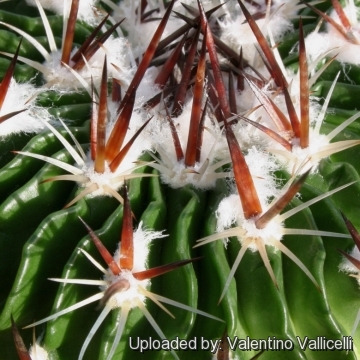 Stenocactus rosasianus Photo by: Valentino Vallicelli
Stenocactus rosasianus Photo by: Valentino VallicelliSend a photo of this plant.The gallery now contains thousands of pictures, however it is possible to do even more. We are, of course, seeking photos of species not yet shown in the gallery but not only that, we are also looking for better pictures than those already present.
Read More... Cultivation and Propagation: Small growing and easy to to care and flower. Because of it’s small size makes a great potted plant specimen, great for beginning collectors. It needs regular cacti soil with good drainage.
Propagation: Seeds (usually) or by the shoots of adult plants (if available).
Exposure: need some direct sun but is tolerant and prefers light shade during the hot Summer months.
Whatering: Allow to dry between watering. Watering should be curtailed during the winter months.
Frost Tolerance: -5°C if kept dry.















